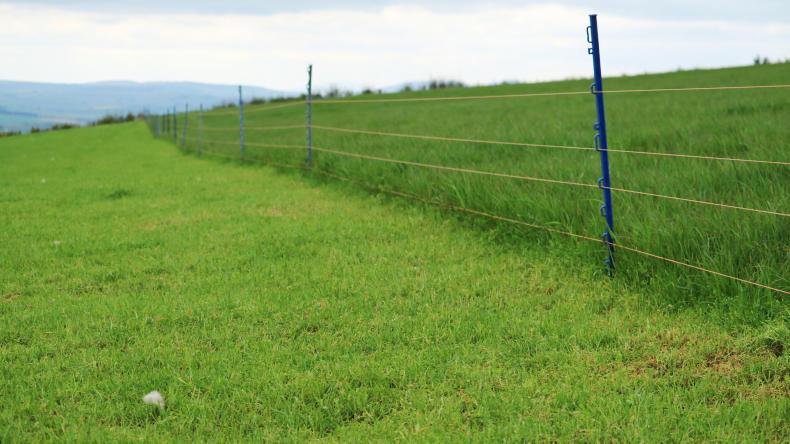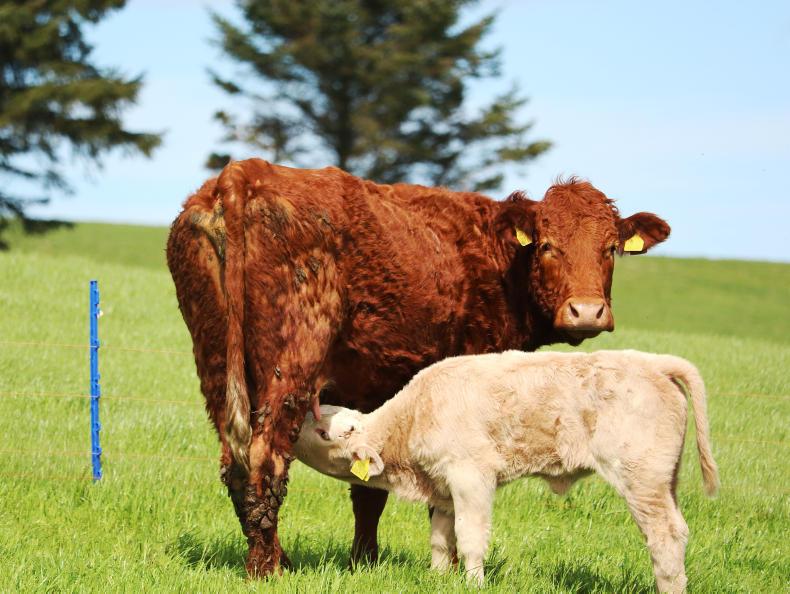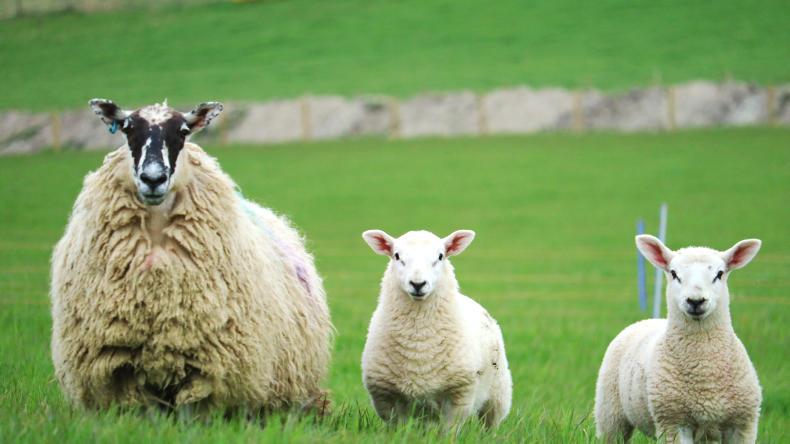With cattle getting to grass this week, the busiest period of the year is coming to an end. Lambing started on 19 March and was all done by 26 April. Having scanned at 194%, we are happy that mortality has, so far, been kept under 10%.
We had a number of ewes scanned for twins coming with triplets this year, which wasn’t ideal. This seems to be common around the country this year, perhaps after the favourable conditions we had in the backend.
We’re trying some rotational grazing with one batch of ewes this year. We have 139 ewes with their lambs on a 17-acre block divided into four. This ground had an early application of fertiliser on 12 March and I was pleasantly surprised with the flush of early grass we got from it. Usually fertiliser would not go out here until the last week of April.


The ewes are struggling to keep up with grass growth and have just moved into the third paddock yesterday. We also added 15 cows and calves into the third paddock to help the sheep get on top of the grass. The final paddock is getting a bit too strong for grazing, so we plan to take this out as baled silage next week. This will keep a highly digestible sward ahead of the sheep for the next rotation. The bales we get will be of the highest quality, and will be fed to either young stock or ewe’s pre-lambing next spring.
The lambs are thriving well and we hope to get them out of the system earlier this year to free up grazing for the ewes in the backend of the year.
The cattle
We’ve had a good calving season this spring. Although we didn’t have a great start, as we lost a set of twins from the first cow to calve. We bought a calf to put on her and she has accepted him well. Things picked up from there and out of the 66 cows calved, so far we have 65 calves on the ground with one cow death. As of this morning, there are still 10 left to calve.
The cows are working hard milking at the moment and are slightly leaner than we would like. However, they are on good grazing now and will be fit for the bulls when they go out in the last week of June.

This is slightly later than we usually let the bulls out. The idea behind this is to get calved cows to grass earlier, so that when they hit peak lactation at six to eight weeks post calving, they are grazing high-quality spring grass. This will help increase milk yield and, therefore, calf growth rate. It will also mean cows are in better condition going to the bull, which will help maintain a tight calving interval.
Uncle Charlie has made up a weigh crate for the cattle. We weighed all the autumn-born calves prior to turnout. They averaged 198kg. It will be interesting to see how they do over the grazing season. Autumn cows will be scanned in the next week or two, and anything not in-calf will be sold.
We sold yearlings at Thainstone on the last Friday in April. We were very happy with trade. The heifers averaged £2.48/kg at 390kg, and the steers averaged £2.43/kg at 447kg.
Silage fertiliser was spread a fortnight ago, so we hope to be cutting the week after the Highland Show.






 This is a subscriber-only article
This is a subscriber-only article









SHARING OPTIONS: